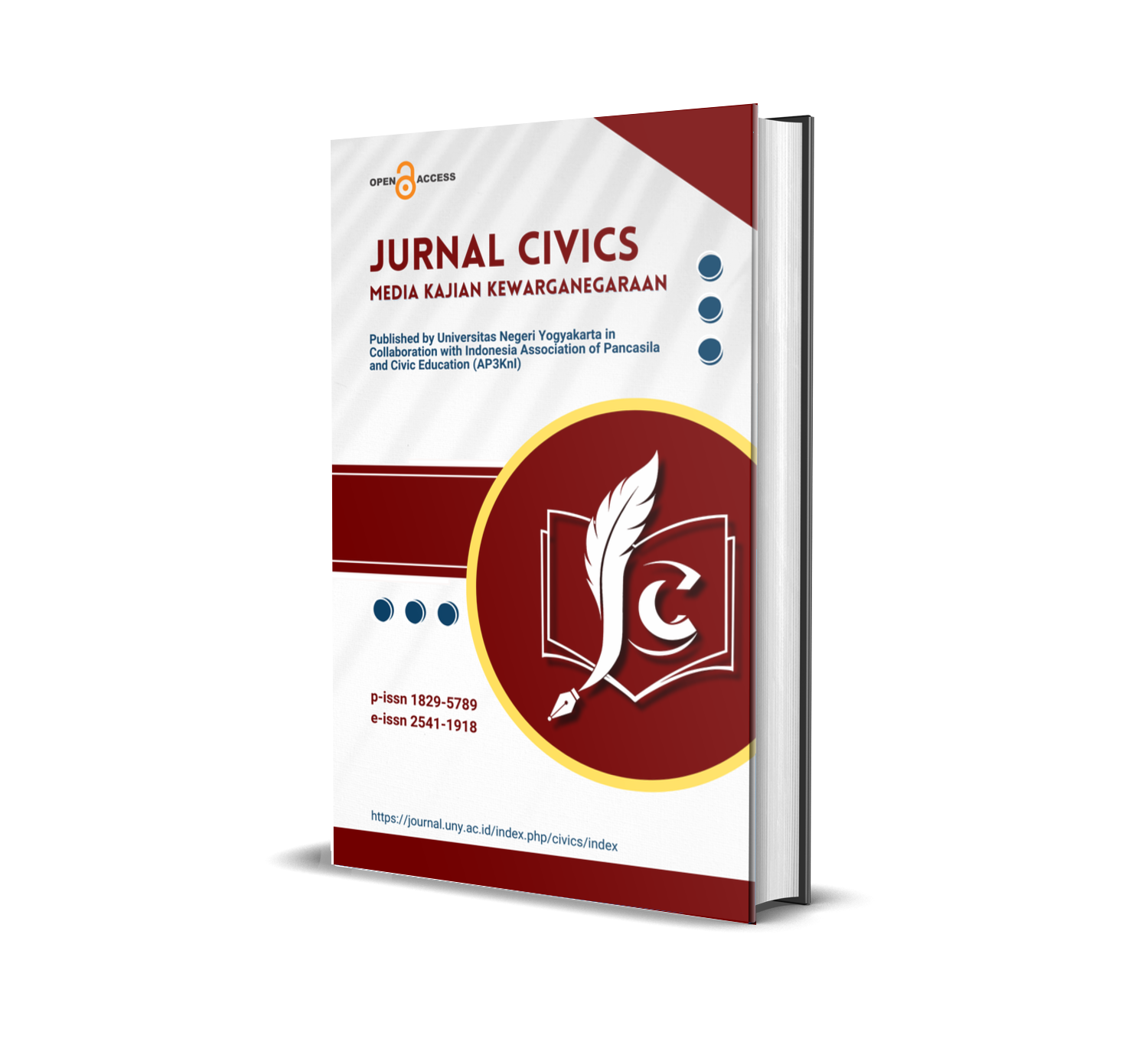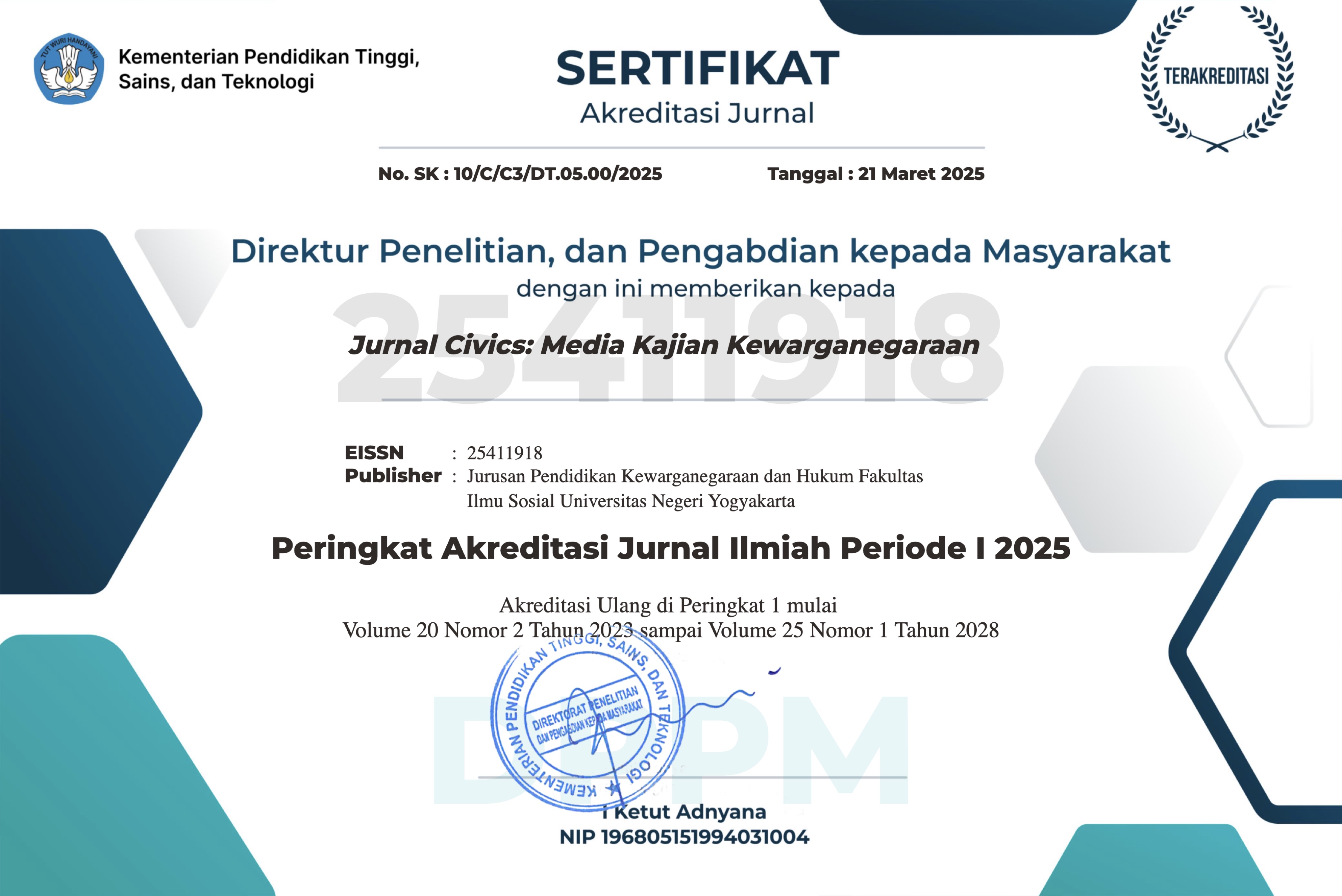Civics and Citizenship Education: historical and comparative reflections
DOI:
https://doi.org/10.21831/civics.v1i1.5662Abstract
Dalam sejarah panjang dunia ini civics dan pendidikan kewarganegaraan di sekolah merupakan fenomena yang relatif baru. Ada dua faktor yang mengarahkan hal ini. Pertama adalah pertumbuhan negara-bangsa dan kedua adalah diperkenalkannya pendidikan untuk massa. Negara bangsa muncul di seluruh dunia dalam jumlah yang besar setelah akhir perang dunia kedua pada pertengahan abad ke dua puluh. Kekuasaan kolonial telah ditentang dan pergerakan kemerdekaan dilakukan atau mencapai kemerdekaan. Di Afrika, Amerika Latin, dan Asia ada peningkatan di sejumlah negara merdeka. Sebagian terbesar menjalankan bentuk pemerintahan demokratis. Mereka melaksanakan pemilu dan memiliki badan perwakilan. Semuanya memperkenalkan beberapa bentuk persekolahan bagi kebanyakan penduduk. Artikel ini membahas sejarah pendidikan yang didukung oleh negara di eropa. Di dalam konteks itu, dibahas civics dan pendidikan kewarganegaraan di Sekolah abad ke dua puluh satu dengan kemungkinan implikasinya bagi Pendidikan Kewarganegaraan di Indonesia.
Downloads
Published
How to Cite
Issue
Section
Citation Check
License
The authors agree to transfer the transfer copyright of the article to The Jurnal Civics: Media Kajian Kewarganegaraan effective if and when the paper is accepted for publication.
Authors and other parties are bound to the Creative Commons Attribution-NonCommercial-ShareAlike 4.0 International License for the published articles, legal formal aspect of journal publication accessibility refers to Creative Commons Attribution-NonCommercial-ShareAlike 4.0 International License (CC BY-NC-SA).










